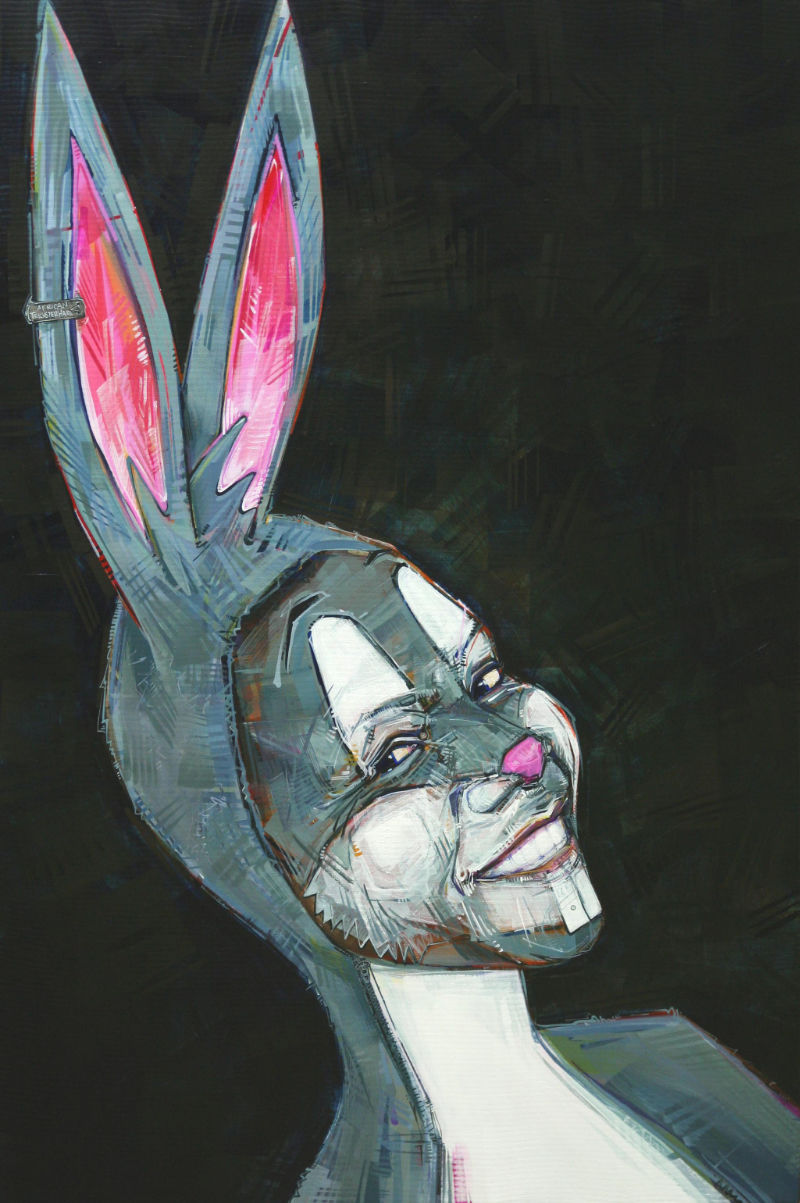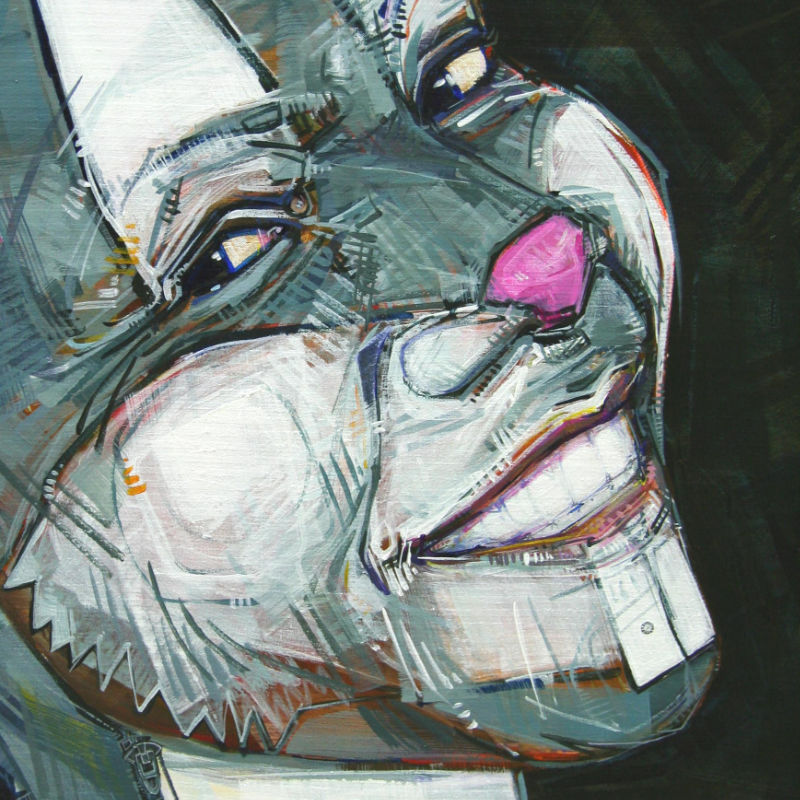Artwork / Archives / Apple Pie / Why the Wabbit Wears White Gloves (Zimbabwean-American, Loveness)

Why the Wabbit Wears White Gloves (Zimbabwean-American, Loveness)
2008
acrylic on seersucker
36 x 24 inches
I asked each of the participants in Apple Pie to write something about what it means to be an American. This is Loveness’ response.
To be American is to sit on the Gold mine and cry of hunger. Or it is to have your feet in the water and cry of thirst.
As with many of the participants in Apple Pie, Loveness didn’t have strong feelings about which American icon she’d like to embody for the series, so I took the lead in suggesting possibilities. We eventually settled on Bugs Bunny, a character derived from the stories of Br’er Rabbit, who was himself an iteration. The tales of Br’er Rabbit emerged as enslaved Africans reinvented the trickster hare figure from Zimbabwean mythology as well as from the legends of other African nations.
In fact, the link between Bugs and the US Slave Trade doesn’t end there. As emancipated slaves moved to Northern cities in the 1800s looking for a better life and better work, poor Irish immigrants had a hard time dealing with the competition in the job market. Some of these disaffected Celts started doing minstrel shows, using traditional Irish dances and stereotypes of Black people on plantations to entertain audiences while also playing on their fear of change. The original white minstrels covered their faces and necks with burnt cork, but didn’t have make-up durable enough to hide their pink hands. White gloves were the workaround, and they became a staple of American entertainment—so much so that they became part of the cartoon Wabbit’s distinctive look.
